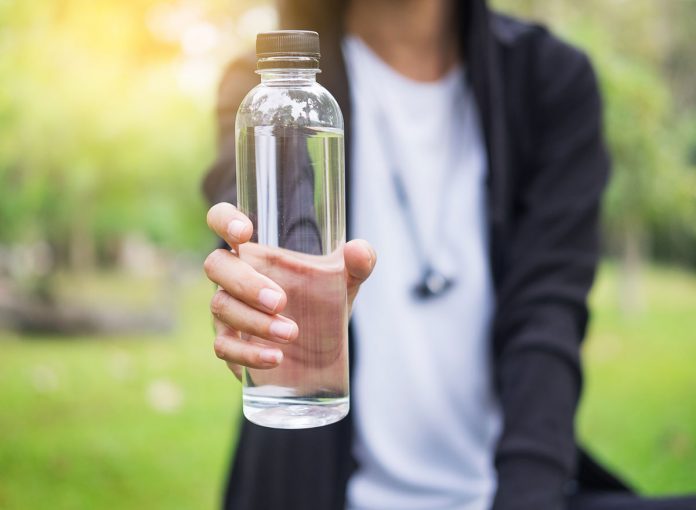Water is one of the few substances that you put into your body every day of your life. Weeks, months, or even a lifetime of drinking so-called “safe” water could prove to be one of your biggest health risks.
Even approved drinking water under the Environmental Protection Agency (EPA) standards may contain specified amounts of lead, arsenic, mercury, radioactive particles, and a long list of other toxins. All of these have been shown to accumulate in body tissue over time, leading to illness and even death.
To illustrate this point:
There are more than 75,000 chemical compounds used by industry and agriculture, with thousands more added each year—many unregulated.
Eighty percent of these chemicals have never been tested for long-term, chronic toxicity.
It’s estimated that 20 billion tons of chemicals, radioactive waste, and pollutants are introduced into the environment each year, and the belief is that most of these toxic chemicals eventually reach our water supply.
In the United States, the EPA has evaluated and set standards for only a small percentage of the more than 700 chemicals found in drinking water supplies.
Purification Is a Must
To best protect yourself, you must drink water that has been purified. There are several different methods of water purification.
One of the most common and least expensive is carbon filtration, which does a good job removing pesticides, industrial chemicals, and chlorine, but is relatively ineffective at eliminating potentially harmful bacteria and other organisms, heavy metals, and inorganic chemicals.
Other filtrations methods include ozone and ultraviolet light (which kill bacteria, viruses, and parasites but are ineffective against heavy metals and pesticides), copper-zinc systems, and reverse osmosis (which is pretty effective, but is also extremely resource intensive and wasteful; for every gallon of pure water produced, between three and eight additional gallons of water get washed down the drain).
The final major method of water purification is the one I happen to recommend most highly: distillation. When used correctly, water distillation provides the purest and safest water available.
How to Make Distilled Water
How distilled water is made is a fairly simple process. Water is heated until it boils and turns to steam. The boiling action kills the various bacteria and other pathogens, and as the steam rises it leaves behind waste material, minerals, heavy metals and other heavier contaminants.
The steam is then cooled and returns to water. So essentially, distillation removes the water from the contaminants, rather than trying to remove the contaminants from the water.
A very similar process occurs millions of times daily all over the planet. Ground water evaporates and rises in a purified form into the atmosphere, where it accumulates and eventually returns to earth as rain or other forms of precipitation.
Distillers have several major advantages over other purification systems. A good distillation system pretty much eliminates the need to ever have your water tested. It’s the only purification system that removes every kind of bacteria, virus, parasite, and pathogen, as well as pesticides, herbicides, organic and inorganic chemicals, heavy metals (dissolved or otherwise), and even radioactive contaminants.
One added benefit to having a distiller is that if your tap water supply is lost for any reason, you can safely distill water from a river, lake, pond, or swimming pool. Distillation takes longer than other methods such as drip filtration, but I consider any inconvenience associated with distillation minor in comparison to the safety.
Potential Distillation Concerns, Debunked
While distilled water is your safest bet, there are a few issues you should be aware of.
Distillation is a very straightforward concept: You boil off the water, and all the undesirable “extras” are left behind. To do the job correctly, however, takes a little finesse.
Some of these compounds are left behind during the distillation process, no matter how the distillation is carried out. These compounds and minerals make up the residue you’ll see remaining in the tray or bottom chamber of your home machine.
The finesse part has to do with the volatile organic compounds (VOCs) that boil off before the water. (More properly, the compounds have what’s called a lower vapor pressure than water. The effect is the same—they evaporate before the water does.) In a properly made distillation unit, the tap water is preheated to just below the boiling point to drive off the compounds that are lighter than water. Once those compounds have evaporated, the water is heated just to the boiling point and is sent to the condensation chamber to return to its liquid state as pure water.
A unit that doesn’t include the preheating phase will evaporate the VOCs along with the water, so they’ll condense with the steam and remain in the finished product. While this won’t concentrate the harmful compounds, it will leave the purifying job half done.
If you don’t distill your water yourself, you won’t know about the process used—which is why I recommend not just that you drink distilled water, but that you buy a high-quality distiller unit to use at home.
Second, it should be noted that distilled water is more acidic than other water. This acidity occurs because carbon dioxide from the atmosphere dissolves in the water, creating a very dilute solution of carbonic acid. Distilled water in a container that’s been sitting open for a while could have a pH in the range of 6. (For comparison, vinegar has a pH of about 4, or 100 times as acidic.)
Your body responds to this trivial amount of acidity by producing more stomach acid. So long as your digestive system is in good shape, and you’re not taking any medication to block the production of stomach acid, then the amount of acidity from distilled water won’t affect any body processes.
Finally, you may have heard that distilled water leaches minerals out of your body. This assertion is made because distilled water doesn’t have any minerals of its own.
However, most of the minerals we take in come from food and supplements, not water. And the fact is that your kidneys do a fine job of keeping your minerals in proper balance. As long as your kidneys are functioning normally, you’ll have no problems drinking distilled water.ke blog comments or forums that aren’t as easy to find.
You can set up Google Alerts (free) or BuzzSumo Alerts to keep tabs on mentions that relate to your brand online. You can also search on many social networks for specific keywords or hashtags to find public posts that reflect a certain sentiment or demand for your product that you might want to act on.
If I was selling LED shoes online, for example, I could use Twitter to find people who’ve expressed interest in my product that I could potentially engage with.
You can monitor multiple channels, keywords, or events using the free version of Hootsuite, or a similar social listening tool.
Engaging: Spark and spur conversations
Every comment you make online leaves a digital footprint. The more positive comments you and your community generate, the stronger your brand. That’s why it’s important to not just start these conversations but keep them alive, especially since many social media algorithms use engagement signals like comments to determine what to show in our news feeds.
It might be tempting to automate your engagement on social networks with a bot that likes and comments on your behalf, but you’ll get to a point where it starts to do more harm than good for your brand. In today’s internet that’s just saturated with automation, you need to prove there’s a thinking and feeling human behind your brand to actually connect with customers.
Instead, monitor your social channels daily and find opportunities to address complaints, thank happy customers, and talk to people who might like your products. Be human. Avoid copying and pasting responses all the time, and allow conversations to happen organically.
If the channel you’re on gives you access to a large audience or you’re speaking to someone with a sizeable following, it might even be worth it to go the extra mile.
Surprise and delight people with your responses, and you’ll find you might be able to gather a crowd around what you thought was a 1-to-1 interaction.
Here’s an example of the “surprise and delight” approach on Twitter from Pizza Pops, one of my favorite brands on social media.
If you have t-shirts or other swag you can send out, it’s a good way to show appreciation offline, especially to influencers. Who knows—maybe they’ll even snap a picture to share online?
Keep in mind that not every mention will warrant a response. But if you see an opportunity to delight customers and build upon your brand’s reputation, go for it.
Here are some best practices for engaging with your community online:
Drive people to your website when it makes sense with links to your content or products, and be sure to track them. Follow the 80/20 rule (give value 80% of the time, and ask them to check out what you’re doing 20% of the time).
Avoid starting a conversation that you can’t end (i.e. ignore trolls).
Make sure you link back to your site and briefly explain what you do in the bio of all of your online profiles.
Keep your brand’s personality consistent, but adapt your conversation-style based on the channel (just like real people do). Don’t be afraid to have a sense of humor.
Directly encourage happy customers to share pictures of your product (a great way to get user-generated content under a branded hashtag).
Be proactive about engaging with your community, not just reactive. Incorporate community engagement posts into your social media publishing—content, contests, challenges, or questions that encourage people to leave comments.
Moderating: protect your reputation
Another important function of community management is managing your reputation online. This involves keeping your social profiles clean from spam and ensuring that any negative feedback is addressed.
To start with, hide spam that detracts from the quality of your comment section. Avoid hiding or deleting sensitive comments because that could be misinterpreted as censorship or deception, and cause a much bigger problem for how your brand is perceived.
However, you should hide offensive and overtly promotional comments that might distract or confuse your community.
Be sure to set up your Facebook Page’s profanity filter under Settings, adding any curse words, spammy language and their variations that you might want to keep out of your community (I’ve blurred out the list of words in this screenshot for obvious reasons).
Of course, we can’t talk about moderation without talking about customer complaints.
Customer complaints are almost unavoidable, and people tend to vent their frustrations online, which can be both good and bad for brands.
If it’s a common question that you can quickly address, keep your answer public so others with similar concerns can see it.
But if the complaint is personal or the following conversation is complicated, take it over to a private chat, but try to keep it to the same channel.
For example, if the complaint is aired on Facebook, take it to Facebook Messenger. If it’s on Twitter, invite the person to direct message you with details. What some brands will do is ask you to email them or call support when the complaint was aired on social media. This just makes it even more frustrating for an already-unhappy customer.
Airlines, in particular, get a lot of complaints, like this example from West Jet’s Facebook Page and have a particularly tough time with moderation. You can see how West Jet moves the conversation to a private channel.
It’s a nice touch to also include a name or your initials at the end of your customer service comments to show there’s a human on the other end.Even if you can’t solve a customer’s problem, show them that you’re listening. It’s a bad look for a brand to ignore customer complaints.
If you’re in the middle of a controversy and you need to manage a crisis that’s resulted in a flood of negative comments (e.g. something went wrong with your last batch of orders), consider writing a well-though-out message that’s broadcasted to your entire audience, outlining your stance and any steps you’ve taken to fix the problem. Everybody makes mistakes.
Measuring: Get feedback from your community
Through all the actions we’ve covered so far, you’ll get a sense of how your community perceives your brand, where you can improve, and even products you can add.
But one of the challenges with community management is limited resources.
Conversations can happen anywhere online, but you can’t be everywhere online.
Figure out which channels your community is the most active on and where you’re most likely to satisfy your main objectives, whether it’s to build brand awareness, drive traffic, or maintain your reputation. Those are the channels you should prioritize.
You can also conduct a sentiment analysis to see how people generally feel about your brand.
There are tools like Social Mention (free) or Sprinklr (enterprise) that will scrape the internet and analyze mentions of your brand or a specific keyword, giving you stats like the ratio of positive-to-negative sentiment, how far these conversations reach, and who are some of the top accounts talking about it.
Keep in mind, however, that sentiment analysis tools don’t 100% reflect the complexity of language and how the internet feels about a topic. They do offer a good place to start though.
You can also get product development insights either on an ongoing basis, listening to what customers tell you, or by asking for it directly through social media or in relevant communities on Reddit or in a Facebook Group.
How to hire a community manager
It’s worth having one person dedicated to handling community management (unless your company is at a size where it needs to scale). This ensures consistency across all your conversations and familiarity with your audience.
You can be your own community manager at the start, but if you’re a one-person operation and your business is experiencing a lot of growth and attention, it’s worth hiring someone to take this task on.
Community management is a full-time job—you can’t just turn it on and off.
Luckily, you can find someone on Upwork or by simply posting a job ad.
If you decide to hand this responsibility off, you need to make sure the person you hire has has the following traits:
Strong communication and social networking skills.
Empathy, patience, and tact (always important for customer service).
Creativity, a sense of humor, and the ability to adapt to your brand’s voice.
The ability to sift through social data to find opportunities and insight.
Familiarity with your social media channels of interest and tools like Hootsuite.
An understanding of your niche or the curiosity to thoroughly learn about it.
Above all, this needs to be someone you can trust as they will, in many ways, be the voice and ambassador of your brand online.
Build up your community to build up your business
Finding or starting conversations and growing your community is a must for lasting businesses, and increases in importance and impact as your business grows.
Community management presents your brand to the world as a likeable, knowledgable personality that others can’t help but want to engage with and it surfaces opportunities to fuel positive discussions about and around your products.
Invest in a strong community and you’ll build a loyal fan base that will advocate on behalf of your brand and even come to your rescue when you need it.































